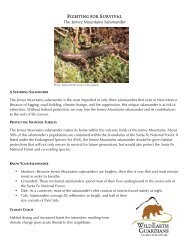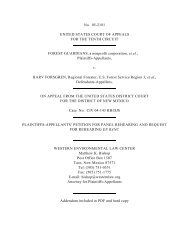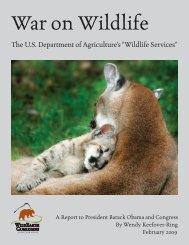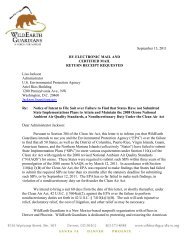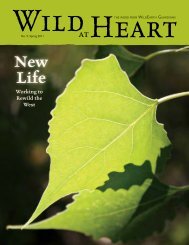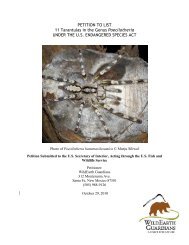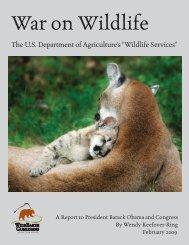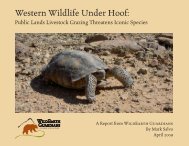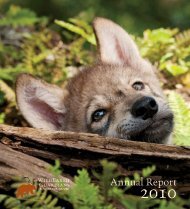PETITION TO LIST THE JEMEZ MOUNTAINS SALAMANDER ...
PETITION TO LIST THE JEMEZ MOUNTAINS SALAMANDER ...
PETITION TO LIST THE JEMEZ MOUNTAINS SALAMANDER ...
Create successful ePaper yourself
Turn your PDF publications into a flip-book with our unique Google optimized e-Paper software.
WildEarth Guardians Petition to List<br />
Jemez Mountains Salamander Under the ESA<br />
43<br />
The NMEST comments state that they do not agree with the effect determination that<br />
impacts to the habitat in proposed salvage units are insignificant or discountable.<br />
The NMEST (1996) was also of the opinion that the biological evaluation and the<br />
environmental impact statement for the Dome salvage sale lacked adequate information<br />
to fully assess the proposed actions on Jemez Mountains salamander. It said the<br />
proposed units contain large portions of moderate-intensity burn and that many of those<br />
areas were likely to recover from fire impacts, but the number of “dying” trees that were<br />
proposed for harvest was not provided. The NMEST said that removal of some unknown<br />
component of live trees, under the presumption that they will soon die, adds additional<br />
risk to Jemez Mountains salamander habitat through to probability of removing trees<br />
which would live, citing data showing detailing survival rates of ponderosa pine. The<br />
NMEST was of the opinion that by removing some number of live trees, the microhabitat<br />
would be further degraded (as noted above) and seed sources would be removed, slowing<br />
the return to forest conditions (which are better for Jemez Mountains salamander than<br />
open grassland).<br />
The NMEST (1996) recommended that the USFS reevaluate what trees would be<br />
harvested in potential salamander habitat (based on the above information) and that if<br />
there was a reasonable probability for a tree to survive, it would be left. It requested<br />
detailed cutting prescriptions and marking guidelines to be presented for each proposed<br />
salvage unit in order to assess ecological effects on salamander habitat. The NMEST<br />
said that the numbers provided in the BE for snags remaining were not very meaningful<br />
in assessing the impacts of the proposed project on salamander habitat. In addition, the<br />
NMEST said that the conclusion in the BE that “ample” snags would remain available in<br />
salvaged areas, was not supported and there was no discussion of the change in habitat<br />
conditions from before and after burn and how it was determined (from a salamander<br />
perspective) what constitutes an “ample” number of snags.<br />
The absence of adequate information on proposed fuelwood activities was also a concern,<br />
relative to potential effects on salamander habitat. The NMEST requested further<br />
clarification on whether or not the commercial salvage units would be opened to<br />
fuelwood collection after the harvest was completed. They were concerned about how<br />
fuelwood areas would be controlled and monitored, to ensure that adequate levels of dead<br />
and down woody material would remain. One question was what trees and logs would be<br />
left in the units and how public cutting would be controlled, as well as the number of<br />
years these areas be left open and how off-road vehicular traffic would be prevented.<br />
The NMEST comments further critiqued the BE and proposed actions of the Dome<br />
salvage sale by stating that analysis of survey data through 1995 showed that salamanders<br />
can occur at elevations as low as 6,900 feet, on southwest aspects and in ponderosa pine<br />
forests and although salamander habitat quality generally declines from north to south<br />
(largely due to climatic gradients), all of the salvage units north of Capulin Canyon (and<br />
the Sanchez proposed fuelwood area to the south) contain potential and actual salamander<br />
habitat (Figures 6 and 7). It said that some rocky drainage slopes are likely to have<br />
potential salamander habitat. The NMEST noted that while the USFS made substantive



